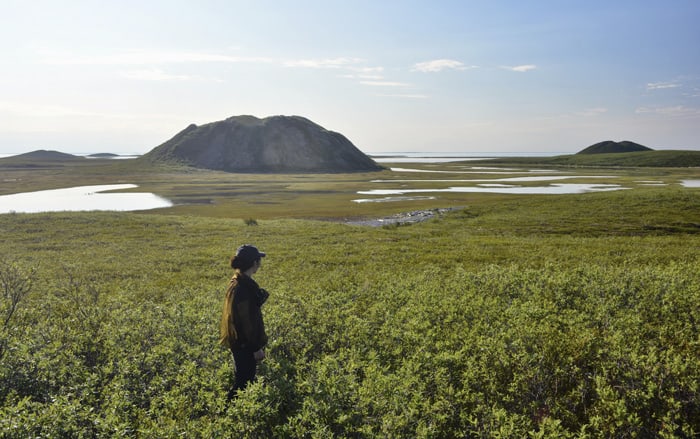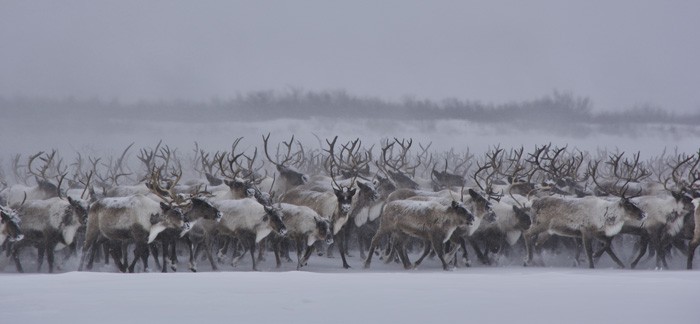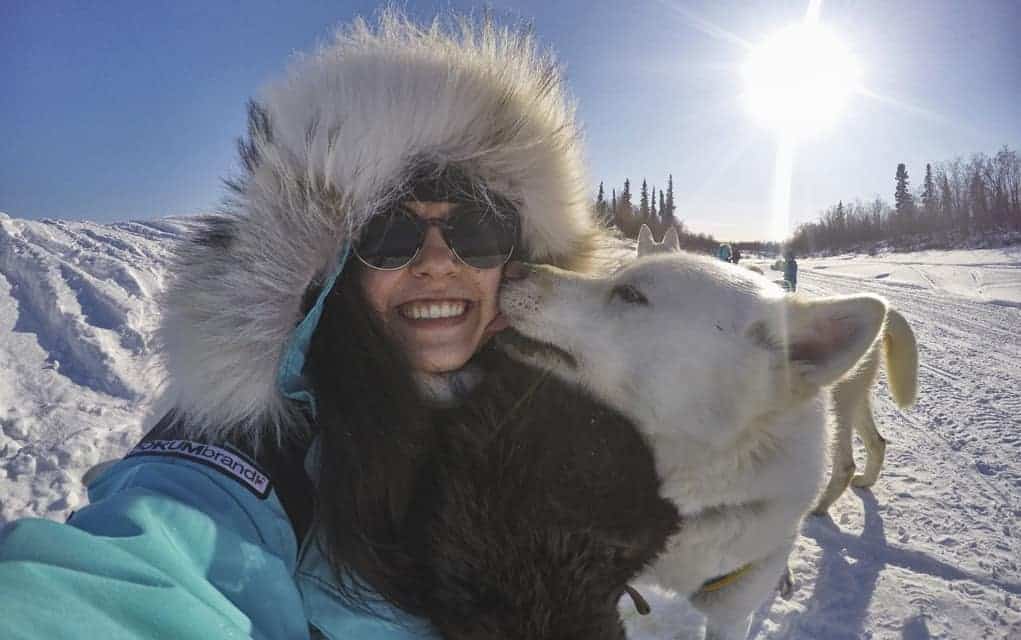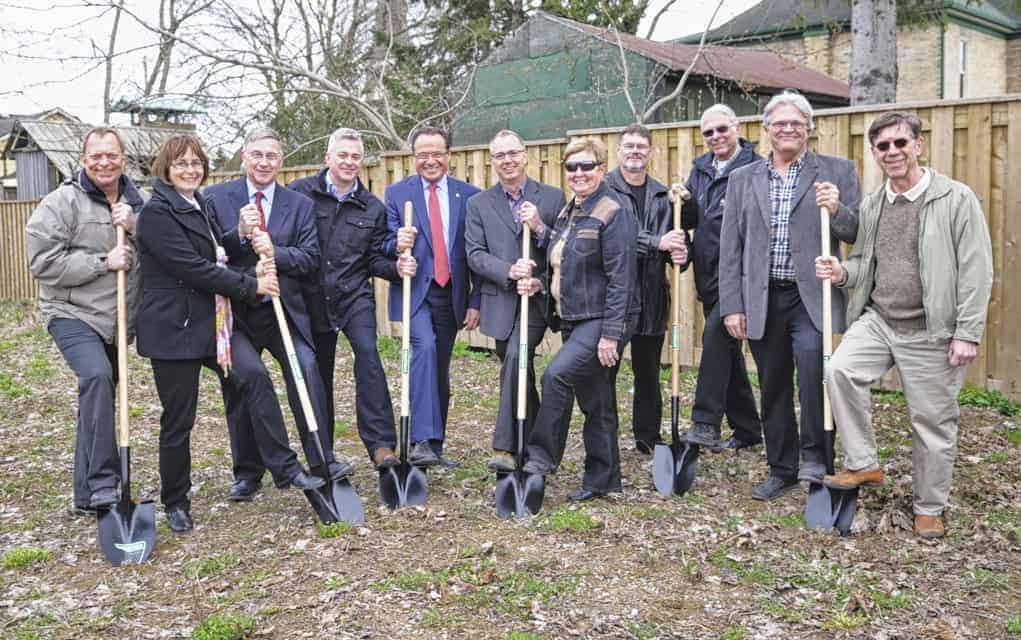Long fascinated with the North, former Elmira woman finds living there has exceeded her expectations
Living 200 kilometres north of the Arctic Circle – where the sun doesn’t set for two months of the year, and where it doesn’t appear for all of December – is a dream come true for former Elmira resident Kelly Kamo McHugh.
She moved to Inuvik in March of 2014 and soon secured employment with the Northwest Territories government as an environmental technician.
“I’ve always wanted to live in the Arctic. I’ve always been really fascinated by it and I knew that one day I would want to eventually live up here once I’m done school. The opportunity arose so I took it,” Kamo McHugh said.
She’s putting her environmental science degree from the University of Guelph to good use, working on a highway project where she monitors the water and soil, and takes ground temperature measurements to monitor the permafrost along the road. This means she’s outside a lot of the time, which is just how she likes it.
She’s been given a lot more responsibility than she would have if she were working elsewhere.
“I get asked to do tasks that I’ve never done before or that I normally would not be qualified to do down south, but as long as you are willing to try and put effort into learning new things, then you can gain extensive work experience,” she said.
As can be expected, it took some time to adjust to the subarctic climate.
“My first weekend there was a Muskrat Jamboree Festival and we were waiting on the ice road for one of the events to start and I just remember that was the coldest I’ve ever been. I think it was only minus-40 with the wind chill, but I was like, ‘I don’t know if I’m going to be able to last if I can’t even survive this one day,’” she laughs. “Eventually I got used to it. As long as you dress for the weather you’re okay.”
![Former Elmira resident Kelly Kamo McHugh has spent the last two years in the Northwest Territories working and enjoying the great outdoors. She notes seeing the Northern Lights and Arctic wildlife as some of the best parts of life up north.[Submitted]](https://www.observerxtra.com/content/images/wp-content/uploads/2016/05/post_news_arctic_1.jpg)
She’s travelled to Tuktoyaktuk and Aklavik since making the move up north. Both communities can only be driven to in the winter when the ice road is open.
Despite being more than 6,000 kilometres from where she grew up, she says there are plenty of commonalities between Inuvik and Elmira.
“Growing up in Elmira I find is very similar to living in Inuvik. It’s a really small town, you can walk everywhere, you go down the street and see a bunch of people that you know, everyone’s really friendly,” she said.
When she was preparing to go to Inuvik two years ago she didn’t know anyone who lived there, but as soon as she started telling people where she was moving they would share their stories and people they had known, either friends or family that had moved up there and loved it. She said this only made her even more excited to go, except for obvious worries about the cold.
“I was really nervous about my first winter here. I didn’t know how it would go. As long as you stay active and stay involved then you’ll be okay,” she said.
Anyone moving up north should keep an open mind when they arrive, she advises. Formalities can be very different than what they’re used to, but it just takes time to adjust.
She attributes much of her desire to live in the Canadian Arctic to its unique landscape.
“I’ve always thought that whenever I’d seen photos or videos of the Arctic it’s just the most beautiful place I’ve ever seen, so I just wanted to be able to see that and experience that northern life myself. And also I’m really interested in northern and Inuit art, so just the culture is really what appealed to me as well,” she said.
The landscape has lived up to her expectations. She often flies over pingos for work in a helicopter and she’s hiked to them three times. Pingos are earth-covered ice hills which only exist in areas of permafrost. The second largest pingo in the world is located in Tuktoyaktuk, titled Ibyuk.
When asked about any challenges to living in Inuvik, she says adjusting to the total darkness in December is one.

For two months of the summer, it’s midnight sun season, which means the sun doesn’t set. While some people have trouble sleeping, she says often she’d be busy and look at the clock, not realizing it was 2 a.m. and she wasn’t even tired.
“You totally lose track of time during the summer and don’t need as much sleep, because you have so much energy from the sun,” she said.
Something that did take some getting used to is the amount of bugs in the summer. She says she’d never seen so many bugs before in her life. When she’s outside collecting water samples she wears a bug net because she prefers not to use bug spray.
But the positives definitely outweigh the negatives.
Her number one highlight so far is being able to see the Northern Lights.
“They’re absolutely incredible, better than I ever imagined and it’s just crazy that they’re just right over top of our town. If there’s a clear night in the winter you’ll be able to see them. I can’t even describe being able to see them dance across the sky while you’re in minus-30 degree weather,” she said.
She says driving on the ice road is another interesting part of northern life. She never thought she’d be able to say she drove on a river. And on a clear day you can look straight down and see fish swimming along.
She’s also proud of the community greenhouse there which has about 90 plots where people can grow their own vegetables for the summer. It’s located in the old hockey arena.
Despite being in town she can walk 10 minutes outside and be in the wilderness. And there are plenty of ways to enjoy it from canoeing in the summer to snowshoeing, snowmobiling, and skiing in the winter.

With that, she’s seen wildlife she’d never see in Elmira, like bears, caribou, wolves, moose, and ptarmigan.
And nothing beats watching the reindeer migration.
“Every year they move from their winter location to their summer location. You can actually watch them cross the ice road to their summer location. I’ve seen it three times now and it’s absolutely incredible. The first time I saw it was my first weekend up in Inuvik and I knew it would be the best place if I got to see stuff like that,” she said.
With two years of northern life under her belt, she plans to stay in Inuvik for at least another year. She’d also like to live in the Yukon and Iqaluit.
“I feel like I’m not ready to leave Inuvik yet. I love it here.”
To see more photos of life in Inuvik, check out her Instagram account, @kellyface__.









